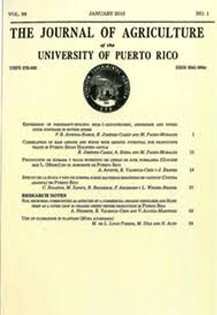Abstract
This study evaluated the influence of hair coat type and color on vaginal temperature (VT) regulation of beef heifers. The VT was recorded in five slick-haired, red colored Senepol (SENEPOL); six slick-haired, light-colored crossbred (SLICK); and four wild-type long-haired, light colored crossbred (REGULAR) heifers, every five minutes for four days. Crossbred heifers were obtained from Charbray x Senepol x Charolais crosses. Air temperature and relative humidity were recorded in synchrony with VT for thermal humidity index (THI) calculation. Heifers were kept in a large paddock with access to natural shade. Data were analyzed by the GLIMMIX and CORR procedures (SAS). Hair type-color interacted with the time of day to affect VT; REGULAR heifers registered greater VT than SLICK and SENEPOL from 2200 to 2400 h (39.33±0.03, 38.84±0.01, and 38.74±0.02 °C, respectively). The highest positive correlations between THI and VT were obtained when using the THI value from seven hours earlier in SENEPOL (r=0.25) and SLICK (r=0.30), and from eight hours earlier in REGULAR (r=0.32) heifers. Regardless of color, the short-haired phenotype conferred superior thermoregulatory capacity. We suggest introducing genes for the slick phenotype of the Senepol into other Puerto Rican beef breeds as a means of reducing the negative impact of heat stress.Downloads
Download data is not yet available.

